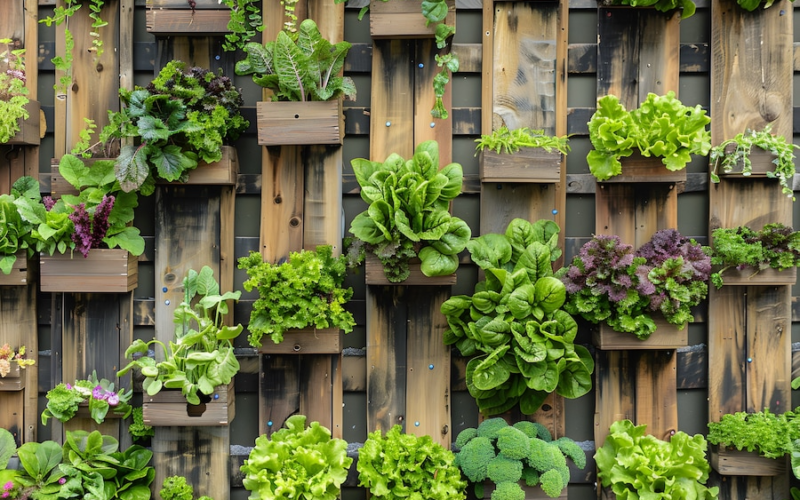Vertical plant walls, also known as green walls or living walls, have become increasingly popular in both indoor and outdoor spaces. Beyond their aesthetic appeal, these green installations offer a plethora of benefits, ranging from improved air quality to enhanced well-being. In this article, we’ll explore how you can effectively utilise the benefits of vertical plant walls in your own space.
Enhanced Air Quality
Vertical plant walls act as natural air purifiers, filtering out pollutants and toxins from the surrounding environment. The plants absorb harmful compounds such as carbon dioxide and volatile organic compounds (VOCs) while releasing oxygen, thus improving indoor air quality. To maximise this benefit, choose air-purifying plants such as pothos, spider plants, and peace lilies for your vertical garden.
Space Optimisation
One of the primary advantages of vertical plant walls is their ability to optimise space, making them ideal for small or cramped environments. Whether you’re living in a compact apartment or working in a crowded office, vertical gardens allow you to bring greenery into spaces where traditional gardening may not be feasible. Utilise vertical surfaces such as walls, fences, or balconies to create lush green oases that enhance the ambience of any space.
Noise Reduction
In addition to their visual appeal, vertical plant
greenery walls also offer acoustic benefits by reducing noise levels. The foliage acts as a natural sound barrier, absorbing and diffusing sound waves, thus minimising echoes and reverberations in indoor spaces. Incorporate dense, leafy plants with large surface areas to maximise the noise-reducing effect of your vertical garden.
Biophilic Design
Biophilic design principles emphasise the connection between humans and nature, promoting health and well-being through the integration of natural elements into built environments. Vertical plant walls serve as a prime example of biophilic design, fostering a sense of tranquillity and connection to the outdoors. By incorporating these living installations into your space, you can create a harmonious environment that promotes relaxation and productivity.
Temperature Regulation
Plants have a natural cooling effect through the process of transpiration, where they release moisture into the air. Vertical plant walls can help regulate indoor temperatures by providing evaporative cooling, particularly in hot and humid climates. By strategically positioning your vertical garden in areas with ample airflow and sunlight, you can harness this cooling effect to create a more comfortable living or working environment.
Improved Mental Health
Numerous studies have shown the positive impact of nature on mental health and well-being. Exposure to greenery has been linked to reduced stress levels, improved mood, and enhanced cognitive function. Incorporating vertical plant walls into your surroundings can help create a calming and rejuvenating atmosphere, promoting mental clarity and emotional resilience.
Sustainable Living
Vertical plant walls contribute to sustainable living practices by promoting biodiversity, conserving water, and reducing energy consumption. These green installations support urban ecosystems by providing habitats for birds, insects, and other wildlife. Additionally, vertical gardens utilise vertical space more efficiently than traditional gardens, allowing you to grow more plants while conserving valuable land resources.
Conclusion
In conclusion, vertical plant walls offer a myriad of benefits that extend beyond their visual appeal. By harnessing these benefits effectively, you can transform your space into a vibrant and thriving environment that promotes health, well-being, and sustainability. Whether you’re looking to improve indoor air quality, optimise space, or create a biophilic oasis, vertical plant walls provide a versatile and practical solution for enhancing any living or working space.






